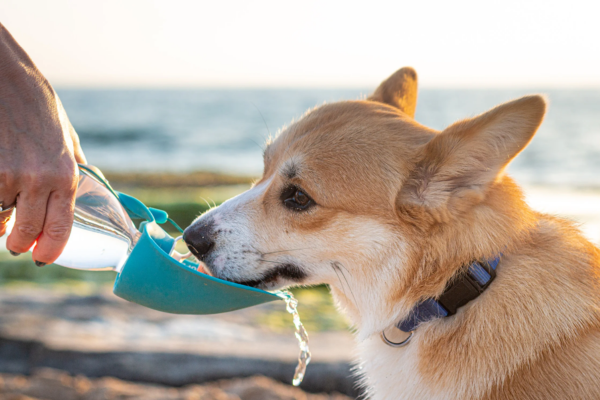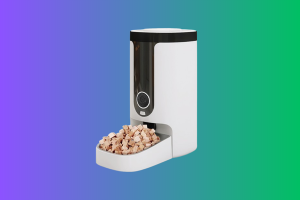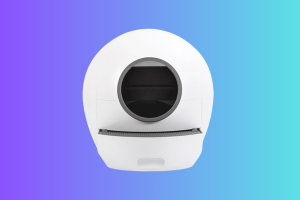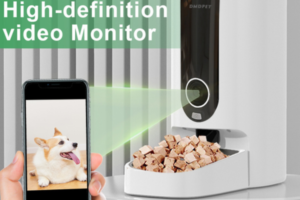
We all understand how important hydration is for everyone, including our pets. Whether you’re taking your dog on a long hike, heading out for a day at the park, or even just running errands, it’s very important to make sure that your pet has easy access to fresh water.
But here’s another question; when you reach for a pet water bottle, do you ever wonder if it’s safe?
Over the last few years, people have been owning pets as they have never taken before, and with these pet water bottles have become essential. This is because these bottles present a convenient means through which our beloved pets can be provided with water regardless of the location.
But with so many different designs and materials on the market, it’s not just about picking the most convenient option—there’s more to it.
The safety of these bottles can translate to your pet’s well-being in one way or the other. Therefore it is important to see if they are made from materials that are safe for your pet. And do they purify the water and make sure it’s free from pollutants and toxic substances? These are the types of questions that every pet owner should consider.
Remember, just like us, our furry pals need plenty of water to stay healthy and active. That’s why choosing the right water bottle isn’t just a minor decision—it’s a key part of caring for your pet.
In this article, we will find out if pet water bottles are a safe option or not. So, let’s begin to explore what makes a pet water bottle safe and how to make the best choice for your beloved companion.
Understanding Pet Water Bottles
A pet water bottle is a unique water dispenser especially used to ensure that your pet has a constant supply of water as you travel. It can be considered as the drinking cup meant only for your furry companion! Because it is a portable water supply, you can take it everywhere and at any time to ensure your pet gets water whenever the need arises.
They are especially popular among pet owners who travel frequently and enjoy taking their pets on outdoor adventures.
Pet water bottles come in various designs and materials, each with its own set of features. Some are simple squeeze bottles with an attached bowl, while others have more sophisticated designs with built-in filtration systems or leak-proof valves. However, the primary purpose of these bottles is to provide a portable and convenient way to keep pets hydrated, no matter where you are.
Different Types of Pet Water Bottles
There are several types of pet water bottles available on the market, based on their material, functionality, and other needs;
- Types of Pet Water Bottles Based on Material
- Plastic bottles are commonly used for pets because they are lightweight and durable, though they may leach chemicals when exposed to heat.
- Stainless steel bottles offer a more durable and hygienic option, often featuring insulation to keep water cool.
- Tritan, a newer material, is known for being BPA-free, shatter-resistant, and stain-resistant, making it a popular choice for high-end bottles.
- Silicone bottles are flexible, lightweight, and often collapsible, which makes them ideal for travel.
- Glass bottles, while heavier, are very durable and non-porous, making them a good choice for animals prone to allergies.
- Types of Pet Water Bottles Based on Functionality
- Portable water bottles; are a good option because they are designed for easy on-the-go hydration. These portable pet water bottles come in different designs like the basic, flip top, and gravity-fed systems.
- Built-in bowl water bottles; these bottles have retractable or foldable bowls attached to a bottle. They are convenient and easy for the pet to use.
- Filtered animal water bottles; these bottles include models with carbon or UV filters, ensuring the water is free of impurities.
- Automatic water bottles; these pet water bottles come with an electronic feature that has a feeder that helps in checking the level of water and dispenses water when needed.
- Multipurpose water bottle type; they are versatile little trucks with attributes like compartments, food storage, waste bags, etc You would like them if you are on a trip.
To learn more about the pet water bottle for your furry friend, click the link below to check it out!
Purpose and Benefits
What is the purpose of taking a water bottle along with you when you are on the go? To stay hydrated, right? The same is the case with a pet water bottle. Every living being needs water to stay alive and energetic, be it your cat or your dog!
The purpose of a pet water bottle is to keep water accessible for the pet all the time. If you are a pet owner, you must be aware of how easily your four-legged friend becomes dehydrated, especially during long trips and hot weather. A portable, easy-to-use pet water bottle reduces your need to find a clean water source when traveling. So, whether you are driving, walking, or even hiking, you can take your pet and pet water bottle along without any worries of dehydration or heatstroke.
Safety Considerations for Pet Water Bottles
One of the most essential aspects of maintaining the health of your pet is ensuring that your furry pal drinks lots of water. It does not just entail offering water but safe and clean drinking water. Pet water bottles are among the best methods of providing your pets with water that is clean and fresh. However, some safety precautions can be observed to avoid some health effects that might arise.
Material Safety
The material composition of a pet water bottle is perhaps the most fundamental safety consideration. Recent research in ACS Publication reinforces major concerns about the leaching of harmful chemicals from plastics, particularly those containing bisphenol A (BPA). A significant study investigated the toxicological profiles of 24 everyday plastic products, revealing that these materials leach a complex mixture of chemicals into water, many of which induce toxicity in vitro.
Another study published in the journal Environmental Health Perspectives highlights the potential endocrine-disrupting effects of BPA. Endocrine is a hormone produced in the bodies of animals and humans. Any disruptions in the production or function of this hormone cause various health issues, including reproductive and developmental problems.
So, when you are looking for pet water bottles, make sure to opt for the ones that are made from BPA-free plastics. Stainless steel and glass are usually safer options because they are less likely to interact with the water.
Leak-Proof Design
The design of the water bottle must be thoroughly considered to ensure it does not leak. Leaks can lead to a variety of problems, including wet bedding, which can create an environment conducive to bacterial and fungal growth.
To avoid leaks, the water bottle should have a secure, tight-fitting seal. Some designs feature double-ball-bearing nozzles that minimize the risk of leaks while still allowing the animal to drink easily.
Hygiene and Maintenance
Maintaining hygiene is another critical aspect of using animal water bottles. Regular cleaning is necessary to prevent the buildup of harmful bacteria, algae, and mold, which can contaminate the water.
According to research published in the journal PlosOne, the formation of biofilm inside water containers is a common issue that can lead to the proliferation of pathogens. Therefore, the design of the water bottle should allow for easy disassembly and thorough cleaning. Bottles with wide openings are preferable as they make it easier to scrub the interior surfaces. Some water bottles are even dishwasher-safe, which can help ensure a more thorough cleaning process.
Regularly clean the bottle and replace the water daily. Stagnant water can quickly turn into a breeding ground for bacteria, especially in warm conditions. By providing fresh water every day,
Proper Sizing and Accessibility
The size of the water bottle should match the needs of the animal. A bottle that is too small may not provide enough water, especially for larger pets or those in warm climates, where they may require more water. Conversely, a bottle that is too large may be cumbersome for smaller animals to use effectively.
Ensure the bottle’s nozzle is the right size for your animal’s mouth, so they can drink easily. Proper placement is equally important; mount the bottle at a height that lets your pet drink comfortably. If it’s too high or too low, they might struggle to reach it, risking dehydration. Make sure the bottle is securely attached to prevent it from being knocked over or moved out of reach.
Regular Inspection and Maintenance
Regularly inspect the water bottle to ensure it’s working properly. Check for cracks, make sure the nozzle isn’t clogged, and verify that water flows freely when your pet drinks. Any damage or malfunction could prevent your pet from accessing water, leading to dehydration. A quick daily inspection can help catch issues early, keeping the bottle safe and functional.
How to Choose a Safe Pet Water Bottle
Now, if you are out to buy a water bottle for your little kitten, make sure to look for these features so that you are sure that the bottle is safe and convenient.
Key Features to Look For
- First of all, look for BPA-free plastic bottles. If you find food-grade silicone, that would be the best. Stainless steel, glass, and food-grade silicon are often safe and durable.
- Remember, your pet will most likely regularly use this bottle. So it needs to be sturdy enough to withstand regular use. Also, make sure that operating the bottle shouldn’t be unnecessarily tricky.
- Don’t forget to consider the size of your pet when choosing a bottle. Larger pets may need a bottle with a bigger capacity, while smaller pets will benefit from a bottle that is easy for them to drink from.
Trusted Brands and Certifications
Go for reputable brands with a proven track record. You can do that by looking for certifications like FDA approval or any certifications that prove that the bottle is made from food-grade material. If you find brands that focus on eco-friendly and non-toxic products, that would be a huge thumbs up!
Common Misconceptions About Pet Water Bottles
There are several misconceptions about pet water bottles that can confuse. Let’s clear up some of the most common myths:
Myths vs. Facts
“Plastic Bottles Are Always Unsafe!”
Well, we can say that some plastic bottles can be a BIG NO! But that is only about “some’’ of them, not all plastic bottles are unsafe. You can buy BPA-free and food-grade plastic bottles without any worries at all. But yes, make sure that you clean them regularly.
“Metal Bottles Are Prone to Rust”!
Metals are indeed prone to rust, but that’s not true when you buy a high-quality stainless steel water bottle. These high-quality stainless steel bottles are resistant to rust. The best thing about them is their nin reactiveness which makes them a safe and durable choice for pet water bottles.
Clarifying Safety Standards
Look for products that comply with regulations from organizations like the U.S. Food and Drug Administration (FDA) or those that have certifications for being free from harmful chemicals.
Tips for Using Pet Water Bottles Safely
To ensure your pet’s water bottle remains safe and hygienic, follow these tips:
- Proper Usage and Maintenance
Always wash the bottle thoroughly before its first use and after each use. Clean it with hot, soapy water, and make sure it’s completely dry before storing it. Never leave water in the bottle for long periods, especially in warm conditions, as this can promote bacterial growth.
- Regular Inspection
Check the bottle regularly for any signs of wear and tear, such as cracks or leaks. A damaged bottle can contaminate the water or leak, which could leave your pet without access to water when they need it.
- Choose the Right Material
When choosing water bottles, prioritize those made from safe, non-toxic materials. Stainless steel and glass are top choices since they don’t leach harmful chemicals and are easy to clean. If you opt for plastic, make sure it’s BPA-free and specifically made for pet use to reduce health risks.
- Monitor Water Levels
Regularly check your pet’s water bottle, especially in hot weather or after exercise. Your pet always has access to fresh water. If they seem hesitant to drink, consider trying a different type of water bottle or bowl that might be more appealing.
Conclusion
Are pet water bottles safe?
Yes! They are, as long as you choose the right ones.
Pet water bottles are a great way to keep water available to your pets all the time, especially when you are out on a trip. But it doesn’t mean that you just pick a random bottle and use it to hydrate your furry friend, no! It’s your responsibility to protect your pet by selecting a water bottle that is made of non-toxic and food-grade materials.
By familiarizing yourself with the various materials, designs, and safety standards, you can make an informed decision that supports your pet’s well-being.
Ready to keep your pet hydrated safely and conveniently? Explore HOEIWELL’s range of high-quality, BPA-free pet water bottles that combine durability, safety, and convenience.
For any questions or further inquiries, feel free to CONTACT US or visit our website today!
FAQs
Are plastic pet water bottles safe?
Yes, as long as they are BPA-free and made from food-grade materials, plastic pet water bottles can be safe for your pet. Ensure regular cleaning to avoid bacterial build-up.
How often should I clean my pet water bottle?
You should clean your pet water bottle after each use to prevent bacteria from growing. Regular cleaning is essential to ensure the water stays fresh and safe for your pet to drink.
What materials should I avoid in pet water bottles?
Do not use plastic bottles containing BPA, or bottles that do not have statements that show that they are food-grade plastics. Also, avoid using cheap metals to produce that oxidize or release some dangerous chemicals into the water. you reduce the risk of contamination and ensure your pet always has access to clean, safe water.






